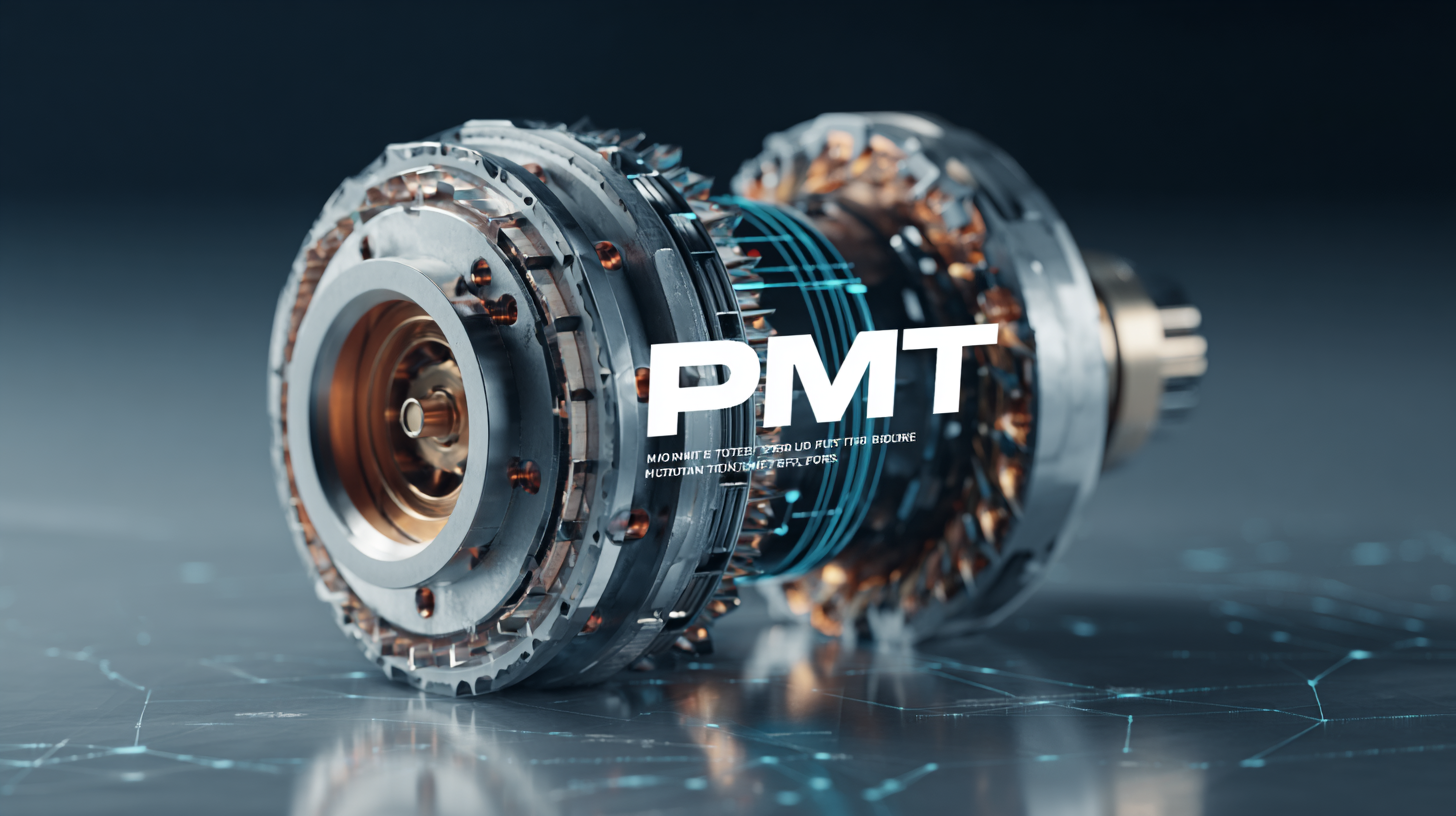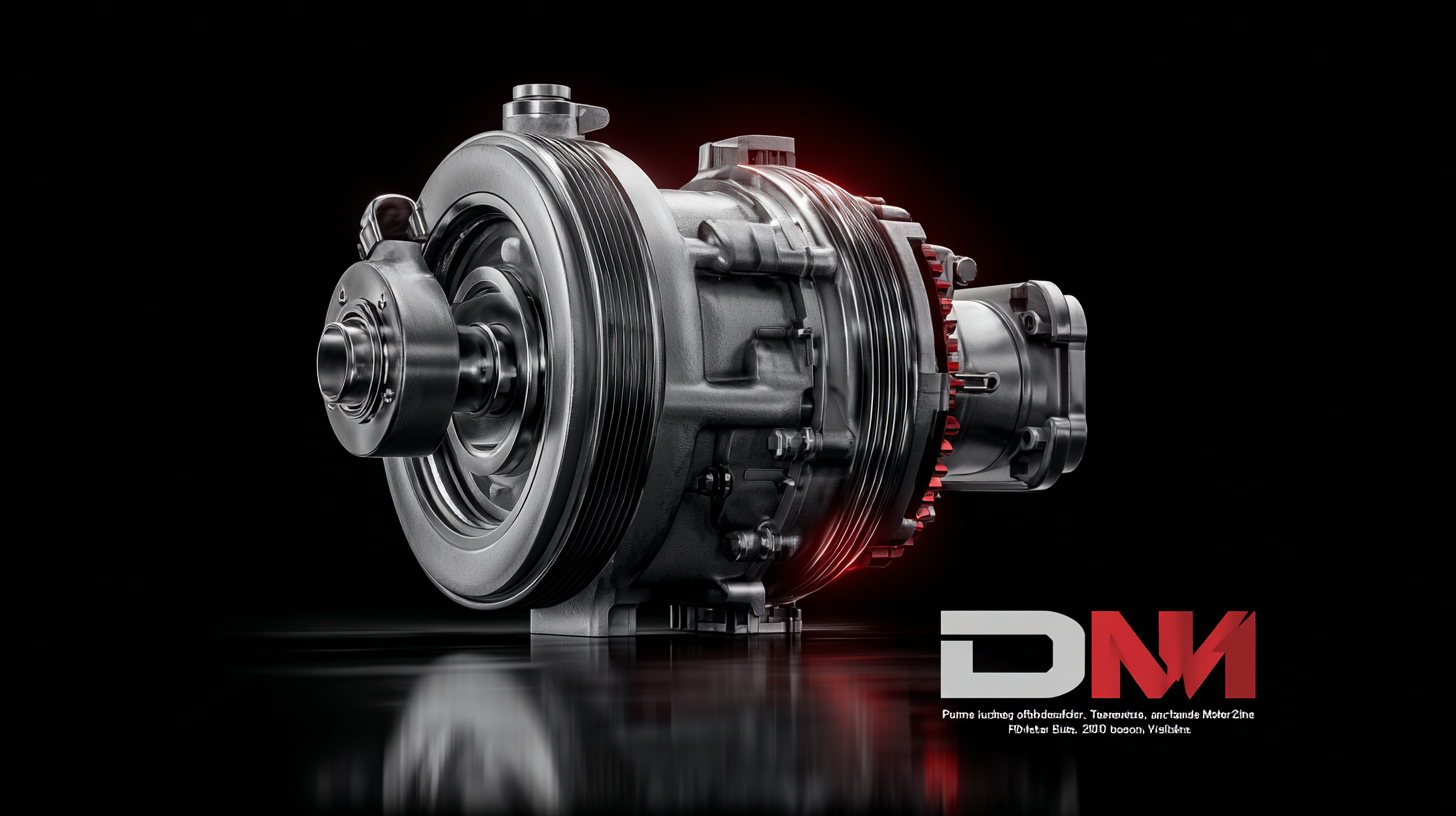

As the global demand for efficient energy solutions continues to rise, the role of Pump and Motor innovations has become increasingly pivotal in various industries. According to a report by MarketsandMarkets, the pump market is projected to reach USD 80.4 billion by 2025, growing at a CAGR of 4.9% from 2020, while the global electric motor market is expected to surpass USD 200 billion by 2025, showcasing a robust growth driven by the need for automation and energy efficiency.

This blog will explore the latest trends and future innovations in Pump and Motor technologies, providing global buyers with essential insights on how to navigate this dynamic landscape successfully. By understanding emerging developments, from smart pumps with IoT connectivity to advanced motor designs that reduce energy consumption, stakeholders can make informed decisions that enhance operational efficiency and sustainability in their sectors.
Emerging trends in pump and motor technology are redefining the landscape for global markets, especially as urban mobility continues to evolve. According to recent market research, the automotive test equipment sector is set to grow significantly, with expectations to reach approximately USD 6.4 billion by 2034. This surge is driven by rising consumer demands for advanced automotive testing capabilities, essential for ensuring the reliability and efficiency of modern vehicles.

In addition, the passenger cars market is undergoing a deep transformation, particularly in emerging economies, where entry-level demand is on the rise. Reports indicate that consumer preferences are shifting towards electric and hybrid vehicles, motivating manufacturers to innovate in motor technologies. As they develop more efficient and powerful pumping systems that cater to this growing segment, the potential for collaboration between pump and motor suppliers and automotive manufacturers is immense. By focusing on efficiency and sustainability, these innovations are poised to address the challenges of urban mobility while meeting the needs of a dynamic global marketplace.
As the world emphasizes sustainability, the pump and motor industry is embracing eco-friendly innovations that cater to global buyers. Eco-conscious consumers and businesses are increasingly seeking alternatives that reduce environmental impact while maintaining efficiency. The rise of energy-efficient pumps and motors not only helps in curbing energy consumption but also minimizes greenhouse gas emissions. Manufacturers are now focusing on creating solutions that integrate advanced technologies such as variable frequency drives (VFDs) and smart sensors. These innovations enable precise control and optimize performance, making them ideal for sustainable applications across various sectors.
In addition to energy efficiency, the use of sustainable materials and design strategies is gaining traction. Many companies are now exploring biodegradable and recyclable materials for pump and motor production, thereby decreasing reliance on traditional, resource-intensive components. Furthermore, innovations such as magnetic levitation and waterless designs are paving the way for a future where pumps and motors function sustainably without compromising reliability. By prioritizing these eco-friendly options, global buyers not only invest in efficient operations but also contribute to a greener planet. The evolving landscape of pump and motor technology reflects a collective commitment to sustainability, ensuring the industry meets contemporary environmental standards.

The advent of automation has transformed the landscape of pump and motor industries, enhancing their efficiency and reliability. Automation technologies, such as IoT (Internet of Things) and AI (Artificial Intelligence), enable real-time monitoring and data analysis, allowing operators to make informed decisions that optimize performance. By implementing automated systems, manufacturers can reduce downtime, foresee maintenance needs, and ensure their pumps and motors operate at peak efficiency. This not only improves operational productivity but also minimizes energy consumption and resource waste.
Moreover, automation facilitates advanced control systems that adapt to varying operational demands. Smart pumps can adjust their output based on real-time data, ensuring that they only consume the energy necessary for the task at hand. This capability not only enhances the lifespan of the equipment but also supports sustainability initiatives by lowering carbon footprints. As global buyers navigate the future of pump and motor innovations, those who leverage automation technologies will find themselves better equipped to meet the evolving demands of the market and overcome the challenges of an ever-competitive landscape.
| Parameter | Description | Impact of Automation | Efficiency Improvement (%) |
|---|---|---|---|
| Energy Consumption | Reduction in energy used by pumps and motors | Increased monitoring and adjustment capabilities | 20% |
| Operational Costs | Overall costs associated with running pumps and motors | Automated systems reduce labor and maintenance costs | 15% |
| System Downtime | Time pumps and motors are out of operation | Predictive maintenance enhances uptime | 30% |
| Performance Optimization | Maximizing output and efficiency of pumps and motors | Automation allows for real-time performance adjustments | 25% |
| Environmental Impact | Reduction in emissions and waste | Improved efficiency leads to lower environmental footprint | 15% |
As industries evolve, the demand for efficient and cost-effective pump and motor solutions continues to rise. Global buyers must evaluate alternatives that not only meet performance requirements but also enhance operational efficiency. According to a recent report by MarketsandMarkets, the industrial pump market is projected to reach $80 billion by 2025, driven by increased infrastructure spending and the need for energy-efficient solutions. This presents a significant opportunity for buyers to explore innovative technologies that can provide cost savings while maintaining reliability.
Tip 1: When assessing pump and motor options, consider materials and design features that enhance durability and reduce maintenance costs. For instance, selecting pumps with advanced ceramic materials can improve longevity and decrease replacement frequency, ultimately leading to significant savings over time.
Furthermore, the emergence of smart technologies plays a crucial role in identifying cost-effective alternatives. A study by Research and Markets indicates that the adoption of IoT-enabled pumps can lead to energy savings of up to 30%. Buyers are encouraged to integrate smart sensors and predictive maintenance systems to optimize performance and minimize unexpected downtimes.
Tip 2: Collaborate with suppliers who prioritize sustainability in their manufacturing processes. This not only benefits environmental goals but also leads to more efficient products that can lower operational expenses in the long run.
Innovation plays a pivotal role in the advancement of pump and motor systems, fundamentally enhancing their performance and efficiency. New technologies, such as advanced materials and smart sensors, facilitate the development of systems that not only operate with greater reliability but also consume significantly less energy. These enhancements are crucial for industries that rely heavily on pumps and motors, as they seek to lower operational costs while maintaining high productivity levels.
Moreover, the integration of digital solutions, such as IoT (Internet of Things) capabilities, is transforming how these systems function. By enabling real-time monitoring and predictive maintenance, companies can identify potential issues before they escalate into costly failures. This proactive approach not only extends the lifespan of pump and motor systems but also optimizes performance, ensuring that users can meet rising demands in a competitive global market. As buyers navigate their purchasing decisions, understanding these innovations becomes essential to leverage the full potential of their equipment.
This chart illustrates the percentage of global buyers who prioritize various innovations in pump and motor systems, focusing on energy efficiency, automation, and durability improvements over recent years. The data highlights the significant shift towards advanced technology in the industry.